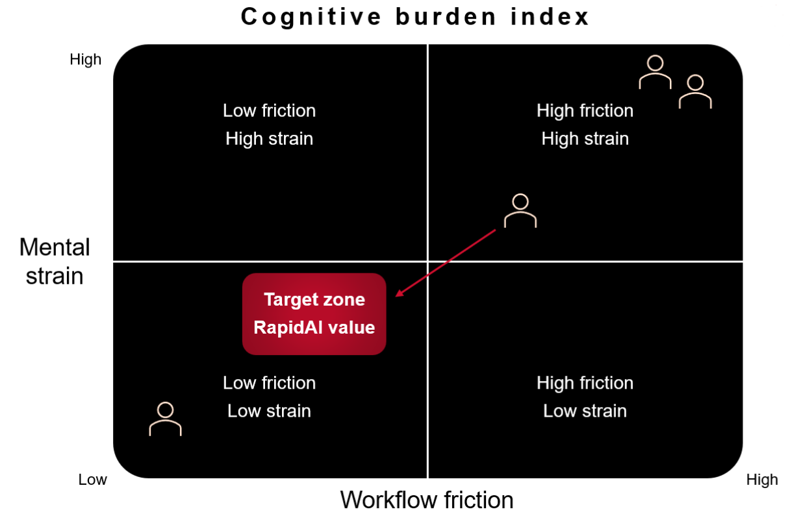Unruptured cerebral aneurysms are increasingly identified incidentally and in non-invasive CTA studies.
We performed a retrospective cohort study to investigate the accuracy of the semi-automated AI software Rapid Aneurysm at detecting unruptured cerebral aneurysms on CTA.
Can Rapid Aneurysm improve the ability of radiologists to detect unruptured cerebral aneurysms?
Key takeaways:
- Rapid Aneurysm had a high sensitivity of 95%
- Rapid Aneurysm had a high specificity of 100%
Imaging analysis
Fifty-one consecutive CTAs from three centers performed between January 2019 and December 2020 were included in the study.
The unruptured aneurysms included in the study were > 3mm in diameter and located in the intracranial circulation.
Four expert neuroradiologists screened the scans and helped set up the reference standard. They weren't aware of the patient's clinical history, initial CTA results, and Rapid Aneurysm results.
The expert neuroradiologists determined the median aneurysm diameter to be 5.4 mm. The aneurysms were located in the internal carotid artery/posterior communicating artery (36.7%), middle cerebral artery (30%), and anterior communicating artery (25%).
Rapid Aneurysm's accuracy in detecting and locating aneurysms was evaluated.
The expert neuroradiologists detected sixty aneurysms. Rapid Aneurysm detected 57 aneurysms.
Rapid Aneurysm ascertained the absence of aneurysms in 909 vessel segments.
Rapid Aneurysm had:
- Sensitivity – 95%
- Specificity – 100%
- Positive predictive value (PPV) – 100%
- Negative predictive value (NPV) – 99.7%
- Accuracy – 99.7%
The reported sensitivity of radiologists in identifying these aneurysms on CTA ranges from 76-98%, and variability in identification between readers is well documented in literature. Given radiology staff shortages in several hospitals and increasing radiology workload, adding AI software like Rapid Aneurysm to the radiology workflow can improve efficiency and ensure aneurysms aren't missed.
Learn more about Rapid Aneurysm, our FDA-cleared imaging platform for cerebral aneurysm management. Rapid Aneurysm creates a personalized 3D vasculature model from the patient's CTA, MRA, and DSA imaging scans.
Read how clinical leaders in the field are reacting to RapidAI's new ground-breaking study here.


